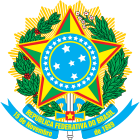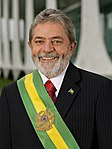|
| |||||||||||||||||||||||||||||||||||||||||||||||||||||||||||||||||||||||||||||||||||||||||||||||||||||||||||||||
Presidential election | |||||||||||||||||||||||||||||||||||||||||||||||||||||||||||||||||||||||||||||||||||||||||||||||||||||||||||||||
| |||||||||||||||||||||||||||||||||||||||||||||||||||||||||||||||||||||||||||||||||||||||||||||||||||||||||||||||
| Turnout | 83.25% (first round) 81.01% (second round) | ||||||||||||||||||||||||||||||||||||||||||||||||||||||||||||||||||||||||||||||||||||||||||||||||||||||||||||||
|---|---|---|---|---|---|---|---|---|---|---|---|---|---|---|---|---|---|---|---|---|---|---|---|---|---|---|---|---|---|---|---|---|---|---|---|---|---|---|---|---|---|---|---|---|---|---|---|---|---|---|---|---|---|---|---|---|---|---|---|---|---|---|---|---|---|---|---|---|---|---|---|---|---|---|---|---|---|---|---|---|---|---|---|---|---|---|---|---|---|---|---|---|---|---|---|---|---|---|---|---|---|---|---|---|---|---|---|---|---|---|---|
| |||||||||||||||||||||||||||||||||||||||||||||||||||||||||||||||||||||||||||||||||||||||||||||||||||||||||||||||
| |||||||||||||||||||||||||||||||||||||||||||||||||||||||||||||||||||||||||||||||||||||||||||||||||||||||||||||||
| 1 October 2006 | |||||||||||||||||||||||||||||||||||||||||||||||||||||||||||||||||||||||||||||||||||||||||||||||||||||||||||||||
All 513 seats in the Chamber of Deputies 257 seats needed for a majority | |||||||||||||||||||||||||||||||||||||||||||||||||||||||||||||||||||||||||||||||||||||||||||||||||||||||||||||||
This lists parties that won seats. See the complete results below. | |||||||||||||||||||||||||||||||||||||||||||||||||||||||||||||||||||||||||||||||||||||||||||||||||||||||||||||||
| 1 October 2006 | |||||||||||||||||||||||||||||||||||||||||||||||||||||||||||||||||||||||||||||||||||||||||||||||||||||||||||||||
27 of the 81 seats in the Senate | |||||||||||||||||||||||||||||||||||||||||||||||||||||||||||||||||||||||||||||||||||||||||||||||||||||||||||||||
This lists parties that won seats. See the complete results below. | |||||||||||||||||||||||||||||||||||||||||||||||||||||||||||||||||||||||||||||||||||||||||||||||||||||||||||||||
| This article is part of a series on the |
 |
|---|
General elections were held in Brazil on 1 October 2006 to elect the president, National Congress and state governors, with a second round of the presidential election on 29 October as no candidate received more than 50% of the vote in the first round.
Elected by a wide margin in the 2002 presidential elections, incumbent Luiz Inácio Lula da Silva of the centre-left Workers' Party (PT) ran for reelection. During his first term in office, Lula implemented a wide array of social programs, including the Fome Zero (Zero Hunger) and Bolsa Família (Family Allowance) programs. The programs were credited for a historic 27.7% drop in the poverty rate during Lula's first term in office.[1] However, the Mensalão scandal, a corruption scandal that implicated politicians in the PT[2] and other parties,[3] briefly caused a decline in Lula's popularity in the year prior to the election.[4] As he did in 2002, Lula would choose centre-right Vice President José Alencar of the Brazilian Republican Party (PRB) as his running mate, despite rumors he would choose a Brazilian Democratic Movement (PMDB) member.[5][6] During his presidential campaign Lula performed best among working-class voters.[7]
The Brazilian Social Democracy Party (PSDB), the dominant centre-right force in Brazilian politics and the PT's main rival at the national level, chose former Governor of São Paulo Geraldo Alckmin as the party's presidential nominee. Closely affiliated with the Brazilian business establishment,[8] Alckmin was very popular as Governor of São Paulo,[9] a stronghold of the PSDB. During his presidential campaign, Alckmin pushed for tax cuts,[10] and he performed best among wealthy voters,[7] while trailing in the working-class vote to Lula. To expand his coalition, Alckmin chose Senator José Jorge of Pernambuco, a member of the centre-right Liberal Front Party (PFL), as his running mate.
Though Lula was expected to win in the first round with a large majority, the President unexpectedly received 48.7% to Alckmin's 41.6%, mandating the need for a second round.[11] This was partially attributed to a late breaking scandal in 2006 known as Dossiergate which involved PT leadership, which allowed Alckmin to surge significantly in the weeks prior to the runoff.[12] Nonetheless, Lula won in a landslide in the second round, with Alckmin garnering a lower vote percentage than he did in the first round.[13] In 2007, Lula would take office for the second time as President of Brazil.
In 2022, Lula was elected to a third term with Alckmin (who lost to Lula in this election) as his running mate. They were sworn in as president and vice-president respectively on 1 January 2023.[14]
- ^ "Miséria no Brasil cai 27,7% no 1º mandato de Lula - Economia". Estadão (in Brazilian Portuguese). Retrieved 2020-12-05.
- ^ "Brazil Mensalao trial: Former chief of staff jailed". BBC News. 2013-11-16. Retrieved 2020-12-05.
- ^ "IstoÉ online" (in Portuguese). June 22, 2005. Archived from the original on April 27, 2006. Retrieved April 27, 2008.
- ^ "Folha Online - Brasil - Popularidade de Lula cai quase dez pontos, diz CNT/Sensus - 13/09/2005". www1.folha.uol.com.br. Retrieved 2020-12-05.
- ^ "Lula deve trocar de vice em 2006 e deseja PMDB para ter maioria - 08/11/2005 - UOL Últimas Notícias". noticias.uol.com.br. Retrieved 2020-12-05.
- ^ "DECISÃO SAI APÓS REUNIÃO COM PMDB AMANHÃ". www2.senado.leg.br. Retrieved 2020-12-05.
- ^ a b "Brazil election divides nation between rich and poor". vaildaily.com. Associated Press. Retrieved 2020-12-05.
- ^ "Brazil's Pro-Business Candidate Won't Win Alone, Protege Says". Bloomberg.com. 2018-05-15. Retrieved 2018-05-25.
- ^ "AVALIAÇÃO DO GOVERNADOR DO ESTADO DE SÃO PAULO - GERALDO ALCKMIN". 2006-11-14. Archived from the original on 2006-11-14. Retrieved 2020-12-05.
- ^ "PSDB lança esboço do programa de governo de Alckmin" (in Portuguese). Terra. Reuters. 11 June 2006. Retrieved 18 August 2013.
- ^ "Election runoff for Lula". the Guardian. 2006-10-02. Retrieved 2020-12-05.
- ^ "Brazilian Justice Indicts Six Close Aides of Lula for Dossiergate". brazzil. 28 September 2006. Retrieved 2020-12-05.
- ^ MacSwan, Angus (2006-10-29). "Brazil's Lula wins second term with landslide". Reuters. Retrieved 2020-12-05.
- ^ Ellsworth, Brian; Paraguassu, Lisandra (31 October 2022). "Lula narrowly defeats Bolsonaro to win Brazil presidency again". Reuters. Retrieved 2 November 2022.



